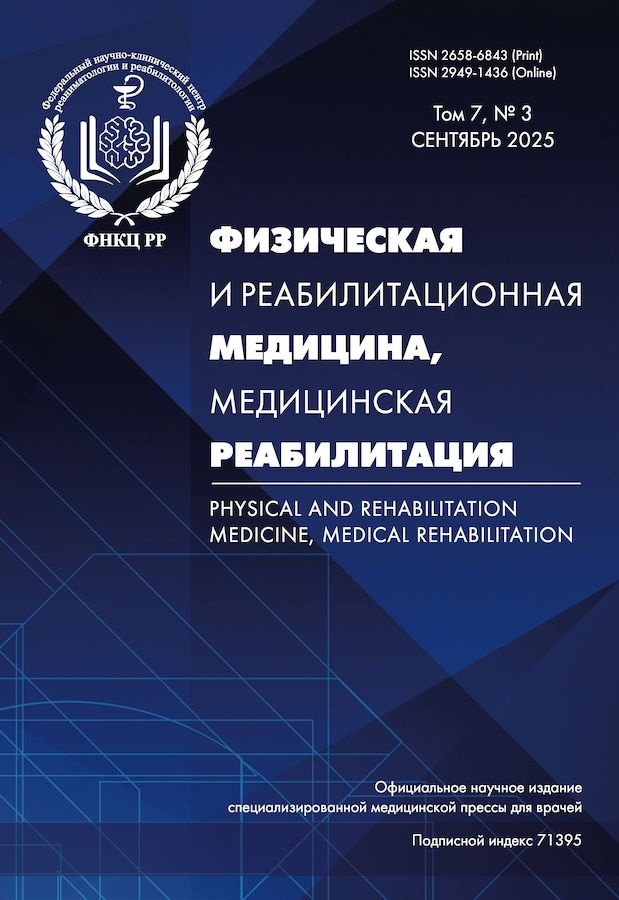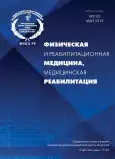CELL AND TISSUE THERAPY OF HEART
- Authors: Scherbak SG1,2, Lisovets DG2, Sarana AM1,2, Makarenko SV1,2, Kamilova TA2, Golota AS2, Snegirev MA2
-
Affiliations:
- SPbSU
- St. Petersburg City hospital №40
- Issue: Vol 1, No 2 (2019)
- Pages: 77-84
- Section: Articles
- URL: https://bakhtiniada.ru/2658-6843/article/view/19191
- DOI: https://doi.org/10.36425/2658-6843-19191
- ID: 19191
Cite item
Full Text
Abstract
Full Text
##article.viewOnOriginalSite##About the authors
S G Scherbak
SPbSU; St. Petersburg City hospital №40
Email: kreml74@mail.ru
Department of postgraduate medical education, Faculty of Medicine St. Petersburg, Russia
D G Lisovets
St. Petersburg City hospital №40St. Petersburg, Russia
A M Sarana
SPbSU; St. Petersburg City hospital №40Department of postgraduate medical education, Faculty of Medicine St. Petersburg, Russia
S V Makarenko
SPbSU; St. Petersburg City hospital №40Department of postgraduate medical education, Faculty of Medicine St. Petersburg, Russia
T A Kamilova
St. Petersburg City hospital №40St. Petersburg, Russia
A S Golota
St. Petersburg City hospital №40St. Petersburg, Russia
M A Snegirev
St. Petersburg City hospital №40St. Petersburg, Russia
References
- Georgiadis V, Knight RA, Jayasinghe SN, Stephanou A. Cardiac tissue engineering: renewing the arsenal for the battle against heart disease. Integr Biol (Camb). 2014;6(2):111-26. doi: 10.1039/c3ib40097b.
- Reis LA, Chiu LL, Feric N, Fu L, Radisic M. Biomaterials in myocardial tissue engineering. J Tissue Eng Regen Med. 2016;10(1 ):11-28. doi: 10.1002/term.1944.
- Maher B. Tissue engineering: How to build a heart. Nature. 2013;499(7456):20-2. doi: 10.1038/499020a.
- Matsuura K, Masuda S, Shimizu T. Cell sheet-based cardiac tissue engineering. Anat Rec (Hoboken). 2014;297(1):65-72. doi: 10.1002/ar.22834.
- Serrao GW, Turnbull IC, Ancukiewicz D, Kim DE, Kao E, Cashman TJ, Hadri L, Hajjar RJ, Costa KD. Myocyte-depleted engineered cardiac tissues support therapeutic potential of mesenchymal stem cells. Tissue Eng. Part A. 2012;18(13-14):1322-33. doi: 10.1089/ten.TEA.2011.0278.
- Makkar RR, Smith RR, Cheng K, Malliaras K, Thomson LE, Berman D, Czer LS, Marban L, Mendizabal A, Johnston PV, Russell SD, Schuleri KH, Lardo AC, Gerstenblith G, Marban E. Intracoronary cardiosphere-derived cells for heart regeneration after myocardial infarction (CADUCEUS): a prospective, randomised phase 1 trial. Lancet. 2012;379(9819):895-904. doi: 10.1016/S0140-6736(12)60195-0.
- Fukushima S, Sawa Y, Suzuki K. Choice of cell-delivery route for successful cell transplantation therapy for the heart. Future Cardiol. 2013;9(2):215-27. doi: 10.2217/fca.12.85.
- Zwi-Dantsis L, Huber I, Habib M, Winterstern A, Gepstein A, Arbel G, Gepstein L. Derivation and cardiomyocyte differentiation of induced pluripotent stem cells from heart failure patients. Eur Heart J. 2013;34(21):1575-86. doi: 10.1093/eurheartj/ehs096.
- Momtahan N, Sukavaneshvar S, Roeder BL, Cook AD. Strategies and processes to decellularize and recellularize hearts to generate functional organs and reduce the risk of thrombosis. Tissue Eng. Part B Rev. 2015;21(1):115-32. doi: 10.1089/ten.TEB.2014.0192.
- Wang B, Wang G, To F, Butler JR, Claude A, McLaughlin RM, Williams LN, de Jongh Curry AL, Liao J. Myocardial scaffold-based cardiac tissue engineering: application of coordinated mechanical and electrical stimulations. Langmuir. 2013;29(35):11109-17. doi: 10.1021/la401702w.
- Hirt MN, Hansen A, Eschenhagen T. Cardiac tissue engineering: state of the art. Circ Res. 2014;114(2):354-67. doi: 10.1161/CIRCRESA-HA.114.300522.
- Chiu LL, Iyer RK, King JP, Radisic M. Biphasic electrical field stimulation aids in tissue engineering of multicell-type cardiac organoids. Tissue Eng Part A. 2011;17(11-12):1465-77. doi: 10.1089/ten.tea.2007.0244.
- Kubo H, Shioyama T, Oura M, Suzuki A, Ogawa T, Makino H, Takeda S, Kino-oka M, Shimizu T, Okano T, Yamamori S. Development of automated 3-dimensional tissue fabrication system Tissue Factory - Automated cell isolation from tissue for regenerative medicine. Conf Proc IEEE Eng Med Biol Soc. 2013;2013:358-61. doi: 10.1109/EMBC.2013.6609511.
- Narita T, Shintani Y, Ikebe C, Kaneko M, Harada N, Tshuma N, Takahashi K, Campbell NG, Coppen SR, Yashiro K, Sawa Y, Suzuki K. The use of cell-sheet technique eliminates arrhythmogenicity of skeletal myoblast-based therapy to the heart with enhanced therapeutic effects. Int J Cardiol. 2013;168(1):261-9. doi: 10.1016/j.ijcard.2012.09.081.
- Zeng QC, Guo Y, Liu L, Zhang XZ, Li RX, Zhang CQ, Hao QX, Shi CH, Wu JM, Guan J. Cardiac fibroblast-derived extracellular matrix produced in vitro stimulates growth and metabolism of cultured ventricular cells. Int Heart J. 2013;54(1):40-4.
- Matsuura K, Haraguchi Y, Shimizu T, Okano T. Cell sheet transplantation for heart tissue repair. J Control Release. 2013;169(3):336-40. doi: 10.1016/j.jconrel.2013.03.003.
- Masumoto H, Matsuo T, Yamamizu K, Uosaki H, Narazaki G, Katayama S, Marui A, Shimizu T, Ikeda T, Okano T, Sakata R, Yamashita JK. Pluripotent stem cell-engineered cell sheets reassembled with defined cardiovascular populations ameliorate reduction in infarct heart function through cardiomyocyte-mediated neovascularization. Stem Cells. 2012;30(6):1196-205. doi: 10.1002/stem.1089.
- Sawa Y, Miyagawa S, Sakaguchi T, Fujita T, Matsuyama A, Saito A, Shimizu T, Okano T. Tissue engineered myoblast sheets improved cardiac function sufficiently to discontinue LVAS in a patient with DCM: report of a case. Surg Today. 2012;42(2):181-4. doi: 10.1007/s00595-011 -0106-4.
- Sekine H, Shimizu T, Sakaguchi K, Dobashi I, Wada M, Yamato M, Kobayashi E, Umezu M, Okano T. In vitro fabrication of functional threedimensional tissues with perfusable blood vessels. Nat Commun. 2013;4:1399. doi: 10.1038/ncomms2406.
- Kawamura M, Miyagawa S, Miki K, Saito A, Fukushima S, Higuchi T, Kawamura T, Kuratani T, Daimon T, Shimizu T, Okano T, Sawa Y. Feasibility, safety, and therapeutic efficacy of human induced pluripotent stem cell-derived cardiomyocyte sheets in a porcine ischemic cardiomyopathy model. Circulation. 2012;126(11 Suppl 1):S29-37.
- Wang B, Tedder ME, Perez CE, Wang G, de Jongh Curry AL, To F, Elder SH, Williams LN, Simionescu DT, Liao J. Structural and biomechanical characterizations of porcine myocardial extracellular matrix. J Mater Sci Mater Med. 2012;23(8):1835-47. doi: 10.1007/s10856-012-4660-0.
- Oberwallner B, Brodarac A, Choi YH, Saric T, Anic P, Morawietz L, Stamm C. Preparation of cardiac extracellular matrix scaffolds by decellularization of human myocardium. J Biomed Mater Res A. 2014;102(9):3263-72.
- Sarig U, Au-Yeung GC, Wang Y, Bronshtein T, Dahan N, Boey FY, Venkatraman SS, Machluf M. Thick acellular heart extracellular matrix with inherent vasculature: a potential platform for myocardial tissue regeneration. Tissue Eng Part A. 2012;18(19-20):2125-37. doi: 10.1089/ten. TEA.2011.0586.
- Muscari C, Giordano E, Bonafè F, Govoni M, Guarnieri C. Strategies affording prevascularized cell-based constructs for myocardial tissue engineering. Stem Cells Int. 2014;2014:434169. doi: 10.1155/2014/434169.
- Sarig U, Sarig H, de-Berardinis E, Chaw SY, Nguyen EB, Ramanujam VS, Thang VD, Al-Haddawi M, Liao S, Seliktar D, Kofidis T, Boey FY, Venkatraman SS, Machluf M. Natural myocardial ECM patch drives cardiac progenitor based restoration even after scarring. Acta Biomater. 2016;44:209-220. doi: 10.1016/j.actbio.2016.08.031.
- Dong J, Li Y, Mo X. The study of a new detergent (octyl-glucopyranoside) for decellularizing porcine pericardium as tissue engineering scaffold. J Surg Res. 2013;183(1):56-67. doi: 10.1016/j.jss.2012.11.047.
- Guyette JP, Gilpin SE, Charest JM, Tapias LF, Ren X, Ott HC. Perfusion decellularization of whole organs. Nat Protoc. 2014;9(6):1451-68. doi: 10.1038/nprot.2014.097.
- Gilbert TW. Strategies for tissue and organ decellularization. J Cell Biochem. 2012;113(7):2217-22. doi: 10.1002/jcb.24130.
- Robertson MJ, Dries-Devlin JL, Kren SM, Burchfield JS, Taylor DA. Optimizing recellularization of whole decellularized heart extracellular matrix. PLoS One. 2014;9(2):e90406. doi: 10.1371/journal.pone.0090406.
- Witzenburg C, Raghupathy R, Kren SM, Taylor DA, Barocas VH. Mechanical changes in the rat right ventricle with decellularization. J Biomech. 2012;45(5):842-9. doi: 10.1016/j.jbiomech.2011.11.025.
- Lu TY, Lin B, Kim J, Sullivan M, Tobita K, Salama G, Yang L. Repopulation of decellularized mouse heart with human induced pluripotent stem cell-derived cardiovascular progenitor cells. Nat Commun. 2013;4:2307. doi: 10.1038/ncomms3307.
- Merna N, Robertson C, La A, George SC. Optical imaging predicts mechanical properties during decellularization of cardiac tissue. Tissue Eng Part C Methods. 2013;19(10):802-9. doi: 10.1089/ten.TEC.2012.0720.
- Hülsmann J, Aubin H, Bandesha ST, Kranz A, Stoldt VR, Lichtenberg A, Akhyari P. Rheology of perfusates and fluid dynamical effects during whole organ decellularization: a perspective to individualize decellularization protocols for single organs. Biofabrication. 2015;7(3):035008. doi: 10.1088/1758-5090/7/3/035008.
- Sanchez PL, Fernandez-Santos ME, Espinosa MA, Gonzalez-Nicolas MA, Acebes JR, Costanza S, Moscoso I, Rodriguez H, Garcia J, Romero J, Kren SM, Bermejo J, Yotti R, Del Villar CP, Sanz-Ruiz R, Elizaga J, Taylor DA, Fernandez-Avilés F. Data from acellular human heart matrix. Data Brief. 2016 May 18;8:211-9. doi: 10.1016/j.dib.2016.04.069.
- Lee PF, Chau E, Cabello R, Yeh AT, Sampaio LC, Gobin AS, Taylor DA. Inverted orientation improves decellularization of whole porcine hearts. Acta Biomater. 2017;49:181-191. doi: 10.1016/j.actbio.2016.11.047.
- Anversa P, Kajstura J, Rota M, Leri A. Regenerating new heart with stem cells. J Clin Invest. 2013;123(1):62-70. doi: 10.1172/JCI63068.
- Chow M, Boheler KR, Li RA. Human pluripotent stem cell-derived cardiomyocytes for heart regeneration, drug discovery and disease modeling: from the genetic, epigenetic, and tissue modeling perspectives. Stem Cell Res Ther. 2013;4(4):97. doi: 10.1186/scrt308.
- Xu S, Zhu J, Yu L, Fu G. Endothelial progenitor cells: current development of their paracrine factors in cardiovascular therapy. J Cardiovasc Pharmacol. 2012;59(4):387-96. doi: 10.1097/FJC.0b013e3182440338.
- Chiu LL, Iyer RK, Reis LA, Nunes SS, Radisic M. Cardiac tissue engineering: current state and perspectives. Front Biosci (Landmark Ed). 2012;17:1533-50.
- Miyagi Y, Chiu LL, Cimini M, Weisel RD, Radisic M, Li RK. Biodegradable collagen patch with covalently immobilized VEGF for myocardial repair. Biomaterials. 2011;32(5):1280-90. doi: 10.1016/j.biomaterials.2010.10.007.
- Massai D, Cerino G, Gallo D, Pennella F, Deriu MA, Rodriguez A, Montevecchi FM, Bignardi C, Audenino A, Morbiducci U. Bioreactors as engineering support to treat cardiac muscle and vascular disease. J Health Eng. 2013;4(3):329-70. doi: 10.1260/2040-2295.4.3.329.
- Byron A, Humphries JD, Humphries MJ. Defining the extracellular matrix using proteomics. Int J Exp Pathol. 2013;94(2):75-92. doi: 10.1111/iep.12011.
- Barallobre-Barreiro J, Didangelos A, Schoendube FA, Drozdov I, Yin X, Fernandez-Caggiano M, Willeit P, Puntmann VO, Aldama-Lopez G, Shah AM, Doménech N, Mayr M. Proteomics analysis of cardiac extracellular matrix remodeling in a porcine model of ischemia/reperfusion injury. Circulation. 2012;125(6):789-802. doi: 10.1161/CIRCULA-TIONAHA.111.056952.
- Sarikouch S, Horke A, Tudorache I, Beerbaum P, Westhoff-Bleck M, Boethig D, Repin O, Maniuc L, Ciubotaru A, Haverich A, Ceabotari S. Decellularized fresh homografts for pulmonary valve replacement: A decade of clinical experience. Eur. J. Cardiothorac. Surg. 2016. doi: 10.1093/ejcts/ezw050.
- Voges I, Brasen JH, Entenmann A, Scheid M, Scheewe J, Fischer G, Hart C, Andrade A, Pham HM, Kramer HH, Rickers C. Adverse results of a decellularized tissue-engineered pulmonary valve in humans assessed with magnetic resonance imaging. Eur. J. Cardiothorac. Surg. 2013;44:e272-279. doi: 10.1093/ejcts/ezt328.
- Woo JS, Fishbein MC, Reemtsen B. Histologic examination of decellularized porcine intestinal submucosa extracellular matrix (cormatrix) in pediatric congenital heart surgery. Cardiovasc. Pathol. 2015;25:12-17. doi: 10.1016/j.carpath.2015.08.007.
- Dijkman PE, Fioretta ES, Frese L, Pasqualini FS, Hoerstrup SP. heart valve replacements with regenerative capacity. Transfus. Med. Hemother. 2016;43(4):282-290.
- Galvez-Monton C, Prat-Vidal C, Roura S, Soler-Botija C, Bayes-Genis A. Update: Innovation in cardiology (IV). Cardiac tissue engineering and the bioartificial heart. Rev Esp Cardiol. 2013;66(5):391-9. doi: 10.1016/j. rec.2012.11.012.
Supplementary files







